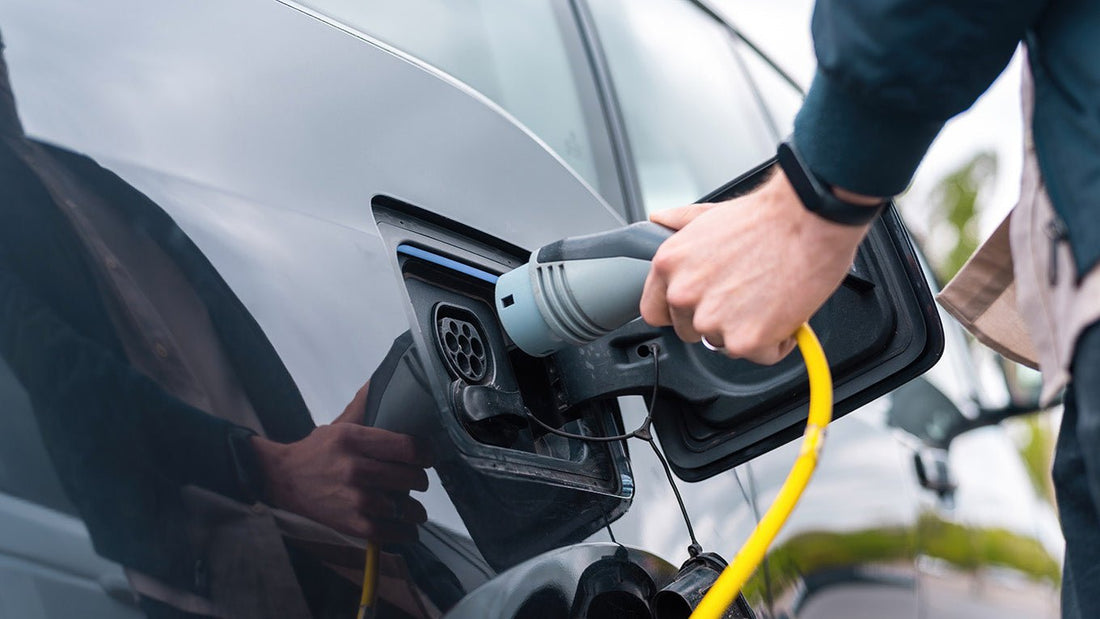Electric car charging cables come in many shapes and sizes, and the one you choose can and will have an impact on your ability to charge your EV. Just imagine if you were at the gas pump and accidentally put diesel into your gas tank instead of unleaded – you’d have to get your car towed, have the diesel pumped out of your tank, and then have it cleaned with gasoline. What a nightmare!
Choosing the wrong type of electric car plug will not be as catastrophic, but it will make your electric vehicle charging inefficient, or perhaps not even work at all. So if you have questions about which electric car charger to install, we have your answers about all plug types.

What kind of plugs are there for electric cars?
For all the good that charging electric cars does for the environment, you’d think that there was a standard set of electric plugs and cables. Well, you’ve probably found out that there’s not a worldwide standard, but what follows will help you understand what you need for your EV.
Type 1 Plug
A Type 1 plug is attached to a Mode 3 cable. The Mode 3 cable controls all aspects of the charge, including communication between the charging station and vehicle. A Type 1 plug is standard in American EVs, and Asian EVs manufactured prior to 2018. It enables 7.4Kws of power for charge.
Type 2 Plug
A Type 2 plug is similar to a Type 1 plug in that it also uses a Mode 3 cable. The difference is that Type 2 plug is more powerful and is standard in Asian and European cars manufactured after 2018. A Type 2 charging cable is much faster than a Type 1, as it produces a 43kW charge.
Combination Plugs
When Ev owners are considering the cost to install an EV charger at home then they may want to consider a Combined Charging System (CCS). Of course, pairing your car with the right plug is the point, but you can gain extreme flexibility with a CCS that enables charging with both Type 1 and Type plugs, and is mainly used for vehicles manufactured by US or German automakers.
CHAdeMO Plug
A CHAdeMO plug is a common, fast-charging plug that’s mainly used in vehicles manufactured by Asian automakers. It delivers a fast charge with up to 62.5 kW, and a second version of the CHAdeMO plug can produce up to 400 kW.
Tesla Supercharger
You probably guessed it, but the Tesla Supercharger is the fast charging cable for automaker Tesla. If you’re asking yourself if you can install a tesla supercharger at home (and you sure can), then you should know that it charges at a maximum of 250kW of power, and can be fitted with an adapter to be used by EVs with CHAdeMO plugs.
Electric Car Plug Types for Home
If you’re considering electric car charger home installation, then you’ll want to make sure to get the right plug. EV charger installation requirements can see you install three different types of plugs.
The Level 1 plug is standard in all new American electric cars and will come with the vehicle. It’s a three pronged outlet and is not very efficient, as it takes more electricity to charge, and can only produce about 4-5 miles of driving per hour of charging.
The Level 2 plug is a more powerful electric vehicle charging plug, as it only takes 4-8 hours to fully charge your car, and can produce 15-25 miles of driving per hour charged. The Harvard School of Public Health recommends that cables be protected for Level 2 plugs by purchasing a home charging station, or an overhead adjustable arm such as the one from EV Hover.
The Level 3 plug is a fast charger that can enable 170 miles of driving for just 30 minutes worth of charging. You can install a dc fast charger at home, and they are mainly meant for newer electric cars.
Domestic Socket
Using a domestic socket is the slowest form of charging an EV. While it may be cheap to operate, the savings will be washed away with inefficient electricity use from such a long charging process.
CEE Plug
A CEE plug is an American standard that was set a long time ago. CEE plugs come in four different types, including as a single-phase blue option, a triple-phase red version for industrial sockets, small industrial plug, and a large industrial plug.
There you have it: EV charging cables and plugs of all shapes and sizes. Standards around the world vary, and there’s something to match every EV owner’s needs. Hopefully, you now have what you need to make the right decision.

